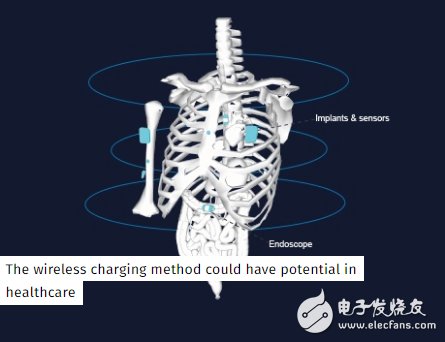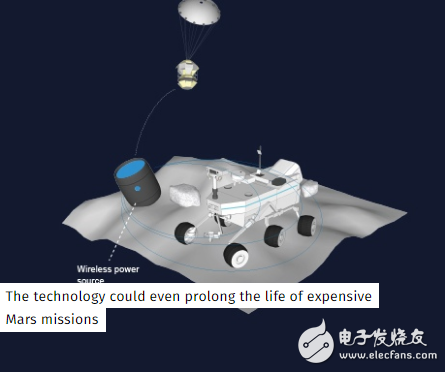Scientists at Imperial College of Technology recently demonstrated a new technology that wirelessly charges drones in the air. In theory, we only need to equip the ground with a car, so that the drone can continue to fly in the air.

More than 100 years ago, the great inventor Nikola Tesla proposed the concept of "inducTIve coupling", which is used by British scientists. The two copper coil loops can be coordinated with each other, and the electronic device keeps the frequency of the coils consistent, thereby achieving the purpose of wirelessly transmitting power. Scientists have been experimenting for decades, but have failed to develop wireless power flight technology.
Scientists at Imperial College of England have now made a breakthrough by unloading the batteries of off-the-shelf drones and then transmitting them wirelessly through inductive coupling. Scientists believe that wireless charging is used to charge airborne objects. This demonstration has not been done before, and new technologies may pave the way for the future and eventually become widely used.

To prove that the method was feasible, the researchers purchased a ready-made quadrotor drone, measuring about 12 cm in size, replacing the electronic components and removing the battery. The researchers then made a copper coil, which was actually the receiving antenna, wrapped around the unmanned body. On the ground, the researchers installed a launch device that consisted of a circuit board that was connected to the electronics and power supply to form a magnetic field.
The researchers adjusted the drone electronics to match its frequency to the magnetic field frequency. Once the drone is flying into the magnetic field, the receiving antenna senses the AC voltage, and the UAV electronic component turns the AC into DC power.

The technology is still in the experimental stage. Above the magnetic field source, the flying height of the drone cannot exceed 10 cm. The research team believes that commercial products can be launched in a year. Once commercial, they believe that commercial drone technology and other equipment will make great progress.
In commercial, surveillance, reconnaissance, search and rescue, the application of drones is more and more extensive. Due to the limited flight distance of the drone and the limited battery life in the air, wireless charging technology can solve these problems.

According to Samer Aldhaher, a researcher and Ph.D. in the Department of Electrical and Electronic Engineering at Imperial College of Technology, wireless charging technology can improve drone technology in many ways. For example, we can configure the vehicle on the ground as a mobile charging station, and the drone is above the car. Flying and charging, there is no need to leave the sky.
Wireless power transmission technology can also be used in other fields, such as sensors, medical care equipment, and can also be used when performing tasks between planets.
Paul Mitcheson, professor of electrical and electronic engineering at Imperial College of Technology, explained: "Imagine installing sensors on bridges and other places, then using drones to wirelessly transmit power to sensors and monitor the internal structure of the bridge. These places are hard to find. Charging the sensor, with wireless technology, no one needs to go."
"Wireless power transmission technology can also be used in implantable micro-diagnostic medical devices. We can wirelessly transmit power from the external power source to the inside of the device. As a result, the new medical embedded device can be safely charged, and the size of the battery can be Zooming out, the side effects of embedding will be reduced."
"In the future, we may be able to use the drone to charge scientific equipment on Mars. The cost of performing a mission on Mars is very high, possibly as much as $1 billion. With this technology, the execution deadline of the mission can be extended."
Solar Inverter,Centralized Inverter,Off-Grid Inverter,Grid -Connected Inverter
Fuzhou Mei Li Cheng Imp&Exp Co., Ltd , https://www.mlc-solar.com